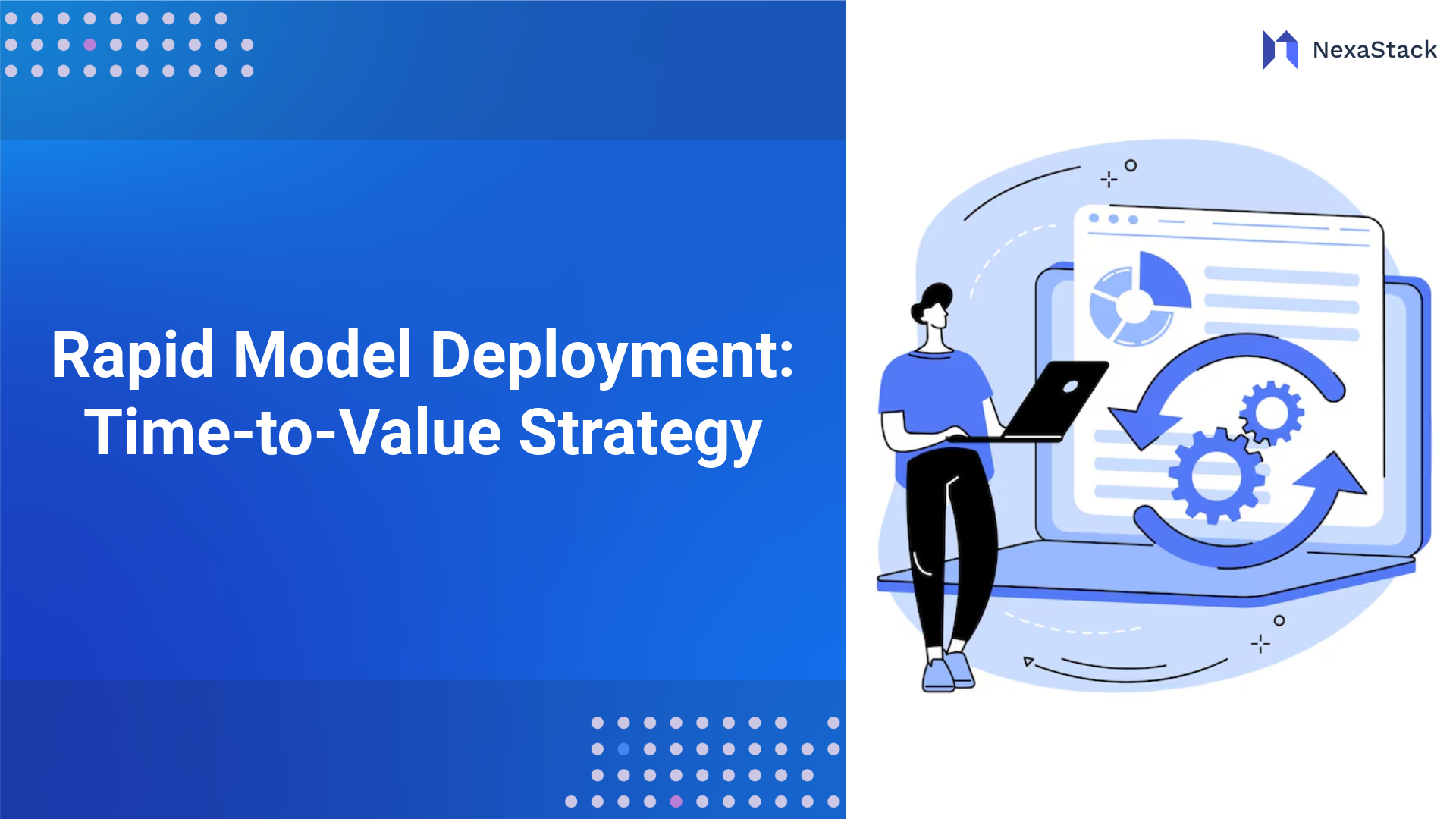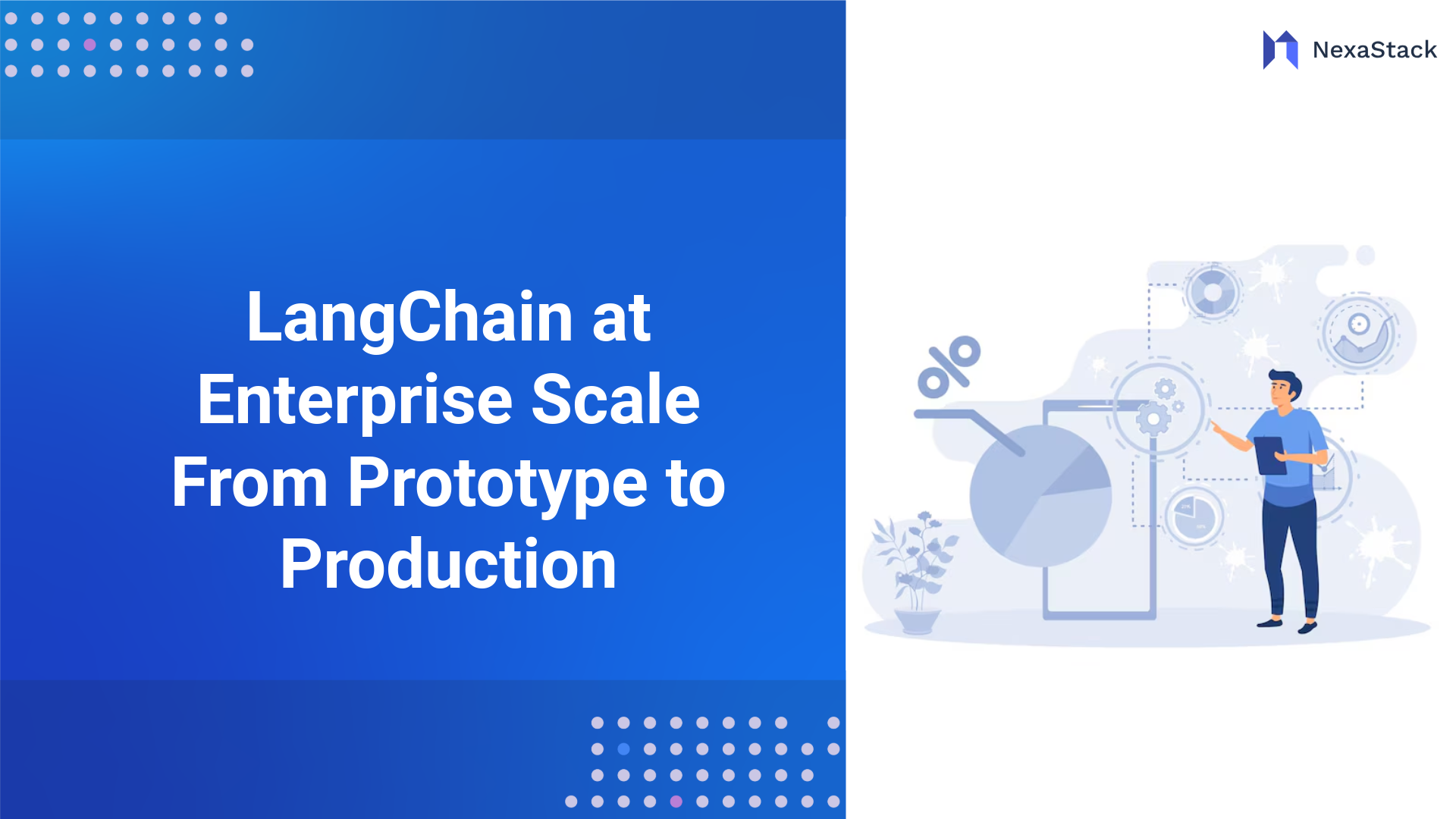As AI adoption accelerates, the ability to deploy machine learning models quickly and reliably has become a competitive differentiator. Traditional model development cycles are often slow, siloed, and prone to delays that hinder business impact. Rapid Model Deployment changes this by focusing on speed, scalability, and alignment with real-world outcomes.
This Time-to-Value Strategy is designed to compress the model lifecycle—from data preparation and training to validation and deployment—enabling organizations to gain insights and drive decisions faster. With markets evolving in real time, businesses need accurate and operationalised AI models to respond to emerging trends and challenges.
This approach's core is a seamless collaboration between data science, engineering, and IT operations teams. By adopting MLOps practices, automating deployment pipelines, and utilising cloud-native infrastructure, organisations can eliminate friction and reduce time-to-market for production-ready models. Tools like CI/CD, container orchestration, and scalable APIs support efficient rollout and ongoing model monitoring.
Organizations implementing rapid model deployment benefit from lower operational costs, faster innovation cycles, and more substantial alignment between AI initiatives and strategic objectives. Reducing time-to-value means AI delivers measurable results sooner, whether for real-time fraud detection, dynamic pricing, or predictive maintenance.
For business leaders focused on AI ROI, rapid deployment provides the framework to evaluate performance early and iterate quickly. It's not just about getting a model into production—it's about delivering continuous value through smart, timely deployment.
Strategic Value of Speed in Rapid Model Deployment
A critical requirement for data science success involves the fast deployment of models to achieve business results. Nearly all organisations face difficulties implementing their developed models through the crucial "last mile" stage. A market environment characterised by rapid changes results in delays, which could produce negative business impacts that range from lost opportunities through income stagnation to competitor outspeeding.
Why Speed Matters
The measurement of Time-to-Value proves vital in the financial services, retail, and healthcare industries since immediate decisions based on current data may result in significant consequences.
Framework for Implementing Rapid Model Deployment
A thorough TTV implementation framework needs to unite the elements of people together with processes and technology systems.
- Model Lifecycle Integration
Model development should be unbreakable with both development and monitoring operations. Data scientists and engineers need longer durations to exchange information through traditional techniques.
- Modular Architecture
Model deployment can occur independently through microservices and containerization tools, including Docker and Kubernetes, for repeatable deployment across various applications.
- Standardized Interfaces
Standardising APIs between teams ensures model reusability and prevents unnecessary custom development of new APIs for every model.
- Monitoring and Rollback
The monitoring system must recognize shifts in data patterns and any deterioration in performance output. It must also include backup features that allow users to restore previous versions of deployed models.
-
Cross-functional Collaboration
Business stakeholders must collaborate with data scientists, IT teams and ML engineers to achieve their goals. Implementing shared objectives and key results helps all team members achieve deployment and valuable results alignment.
 Figure 1: Rapid model deployment for faster time-to-value and continuous impact.
Figure 1: Rapid model deployment for faster time-to-value and continuous impact. Essential Resources for Scalable Model Deployment
The process of fast and effective model deployment requires more than just the expertise of data scientists. A successful deployment initiative represents a joint undertaking from different team members who need appropriate tools and organisational support.
Human Resources:
Technical Resources:
-
Model Serving Platforms: The following Model Serving Platforms include vLLM, TorchServe, Seldon Core, and BentoML.
Time Investment:
Time-to-value is defined by investing time correctly rather than taking shortcuts. The process should include consecutive short development cycles for MVP construction, rapid prototyping phases, and system validation before launch activities.
Governance and Compliance in Rapid AI Deployment
Governance proves essential for sustaining trust, adherence to standards, and reliability at every pace, particularly during quick deployments. Model deployment without proper governance standards leads to delivering unethical, biased, non-compliant models to production.
 Figure 2: Governance flow for secure and compliant model deployment.
Figure 2: Governance flow for secure and compliant model deployment. Key Governance Principles:
-
Model Validation: During pre-deployment testing, a model validation system must set performance thresholds for accuracy, precision, recall, and KPIs.
-
Documentation: Each model needs proper documentation, which includes information concerning its purpose, limitations, training data sources, and staff members responsible for its creation.
Governance Tools:
-
Monitoring Dashboards: Performance transparency is ensured by using monitoring dashboards.
-
Governance: The system needs to be integrated into the pipeline development process instead of being added at the final stage.
Key Metrics to Measure Deployment Performance
A model's real-world success depends on its ability to perform well in practice. Model assessment needs to contain technical evaluations and measurements of business performance.
Technical Metrics:
Business Metrics:
Leading vs Lagging Indicators:
Teams need to create specific metrics they will use to evaluate how each model deployment affects business operations.






